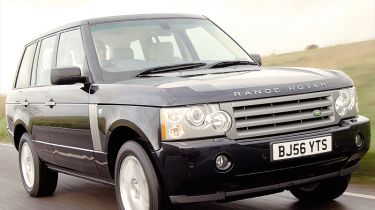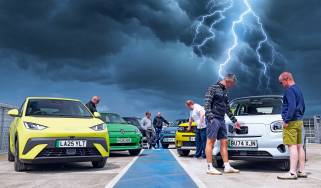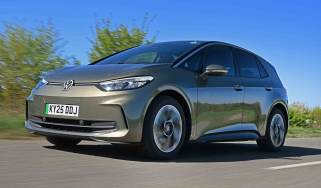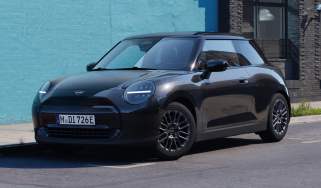Range Rover (2002-2012) review
The Range Rover remains highly desirable. It has a feel good factor other models lack, and the TDV8 is the best engine available for it.

Driving:
Car development tends to be evolutionary. Rarely do we get big leaps forward. Yet the Range Rover's TDV8 diesel offered exactly that when it was launched. It delivers a 0-60mph time which is four seconds faster than its Td6 predecessor, yet its main strength isn't power. The smoothness and refinement are first-class. The engine never becomes intrusive and suits the car brilliantly, as does the slick six-speed auto. The car's brakes are a weakness though. Brembo may supply them, but they struggle to deal with the TDV8's massive 2,717kg kerbweight, so stopping distances are long and the ABS cuts in too soon. But, with 400Nm on tap from just after tickover, and pulling only 1,900rpm at 70mph, the Range Rover has a relaxed feel that makes even V8 petrol versions also available seem hard-working (though the Supercharged 4.2, sharing an engine with the Jaguar XKR, does provide savage acceleration). This blends perfectly with its road manners. It rides brilliantly, smothering bumps and ironing out imperfections, and even though it can feel ponderous through corners, the Range Rover remains well controlled.
Marketplace:
The Range Rover may boast a range of V8 petrol engines sourced from Jaguar, but it's the TDV8 diesel that's stealing all the headlines. The 3.6-litre twin-turbo V8 is 54 per cent more powerful, torque is up 64 per cent, and it's claimed to be 75 per cent quieter than the straight-six diesel it replaces. It gives the Range Rover the ability to rival the best luxury cars again - models such as the Audi A8, Mercedes S-Class and BMW 7-Series, as well as obvious off-road competitors like the Mercedes GL, Audi Q7 and Porsche Cayenne. And for the ultimate British luxury rival, how about pitching the Range Rover against a Rolls-Royce Phantom?
Owning:
The Range Rover was facelifted in 2006, adding polish to instantly recognisable lines. Make no mistake, this is a big car. So it follows that it should be vast inside, too. Surprisingly, the boot (accessed through the famous split tailgate) isn't actually that large, but rear seats are palatial with an unbeatable sense of space and an airy atmosphere. Yet it's the cabin's luxurious ambience that really impresses. Land Rover's British craftsmanship and taste can't be bettered, and we love the beige leather with blue piping, even if it's not the most practical colour choice. The driving environment is a work of art as well. Visibility is excellent, there's masses of useful storage, tactile trim and the overall design and layout remain fresh, appealing and modern. Needless to say, the Range Rover is superb off-road. Terrain Response means you simply turn the dial to the surface you're driving on, and away you go. It's astounding in the rough, absorbing impacts well and maintaining traction. You certainly pay for this ability through, with the Range Rover's list prices looking extremely expensive, though standard equipment levels are generous, which boosts the car's luxury credentials even further. But retained values are less impressive - the SUV bubble has undoubtedly burst - and, predictably, the TDV8 achieved just 21.5mpg in our hands. Petrol models are much worse still. And even buyers who can swallow the list price will baulk at the servicing costs.



